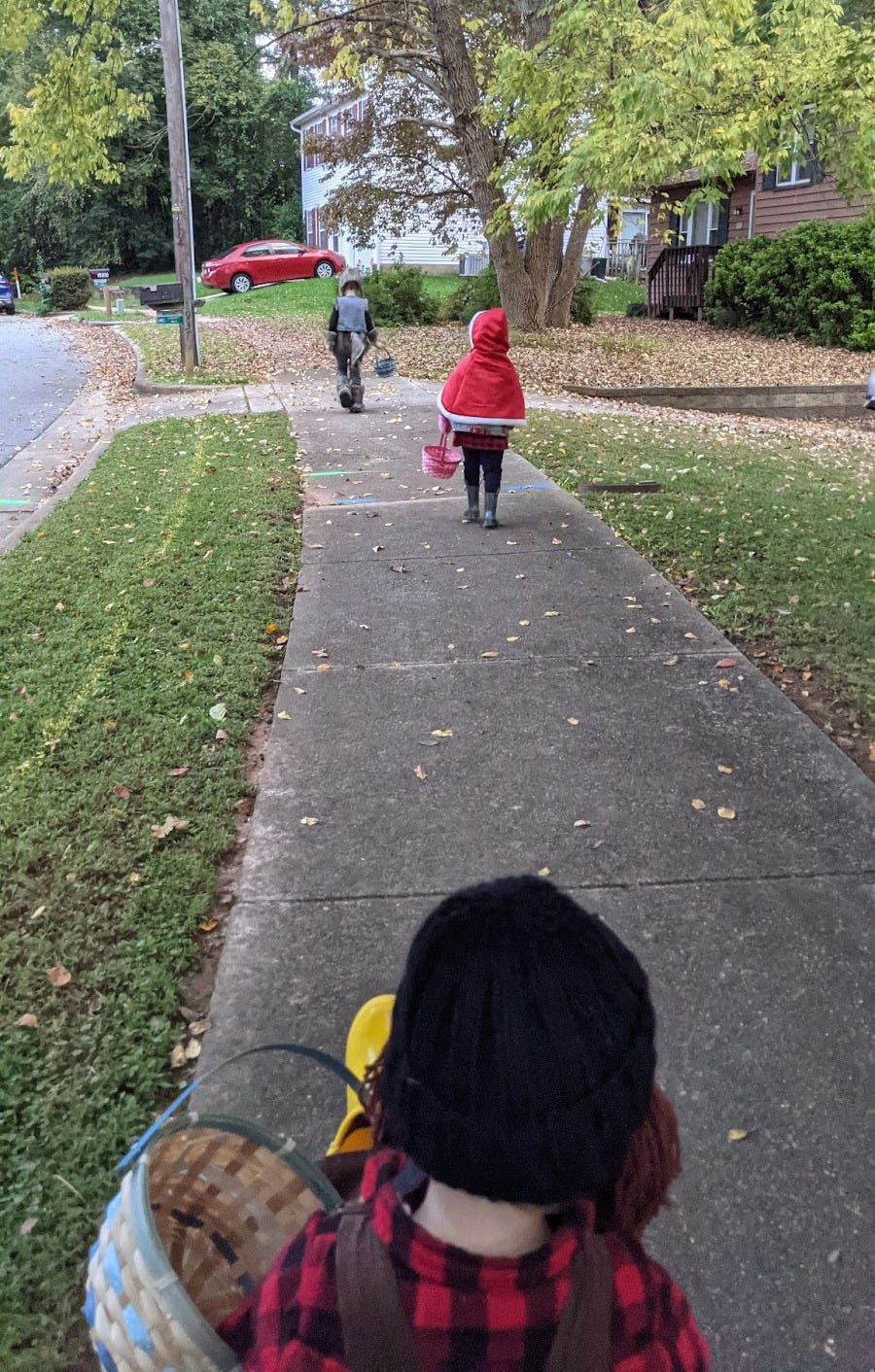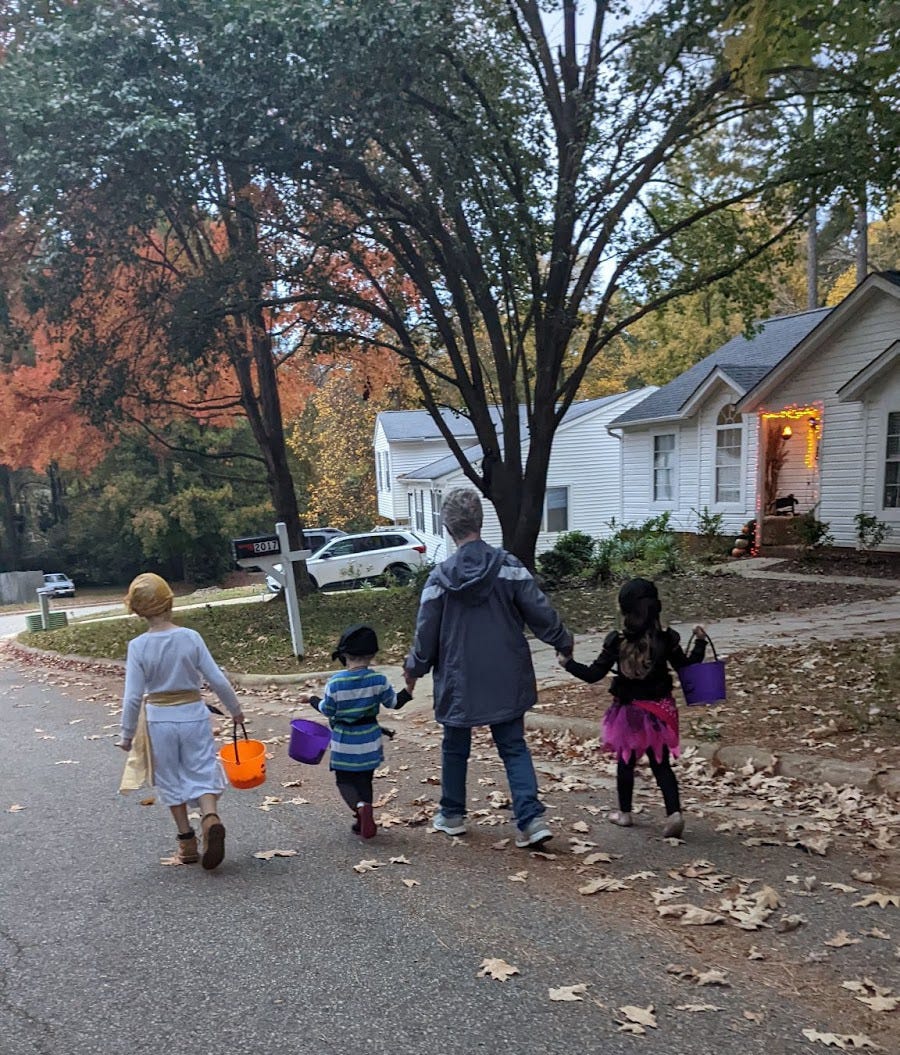Halloween Is Walkable Urbanism
More neighbors means more candy
Every October 31st, neighborhoods across the Triangle come alive. Kids skip from house to house, grown-ups stroll and chat with neighbors, and for one evening, our streets transform into places for people.
Halloween is more than a night of spooky costumes and sugary sweets. It’s an unintentional demonstration of walkable urbanism — a glimpse of how joyful, safe, and connected our communities can feel when we slow down and share public spaces.
Most of the year, our daily lives revolve around the drive. Americans spend an average of one hour each day behind the wheel while commuting, running errands, and living our lives moving from one parking lot to another.
People seek respite from this condition when they can, choosing to drive to destinations in order to enjoy non-vehicular hours in downtowns, parks, gardens, waterfronts, state fairs, college campuses, and quaint old mountain towns. We seek out these walkable places because we’re drawn to something we know we’ve lost.
On Halloween, many families drive from miles away to enjoy the best trick-or-treating spots. These coveted locations are usually compact, walkable, and social. Turns out higher density is ideal for maximum candy accumulation (add this to the list of density’s more enriching qualities). As families, we’ll travel to experience the joy of pedestrian life, if only for one night.
Yet even in more spread-out neighborhoods, Halloween celebrates what happens when we go outside and walk around together. The usually silent streets echo with laughter and conversation. Neighbors sit on porches or gather around fire pits. Young children wander and explore their surroundings on foot. Older kids socialize independently and taste the freedom of a neighborhood that feels alive and unguarded. The barriers between private and public life blur, and for a few sweet hours, our communities are whole, and they are for everyone.
Halloween taps into a deep human need for connection and belonging. The day embodies those same instincts that good urban design supports year-round. We love it because it feels safe, social, and spontaneous. We love it because it slows us down, lets us see our neighbors, and turns the street into a shared living room.
Halloween is, in many ways, an escape. Not to somewhere far away, but to what our neighborhoods could be if they were built for people first, instead of cars. It’s a reminder that the best parts of community life don’t require long drives or big destinations. They just need sidewalks, porches, and a reason to come outside.
When the night is over, perhaps the spookiest idea we’re left with is this:
If we love the walkable world of Halloween so much, why can’t we build it to last all year long?




